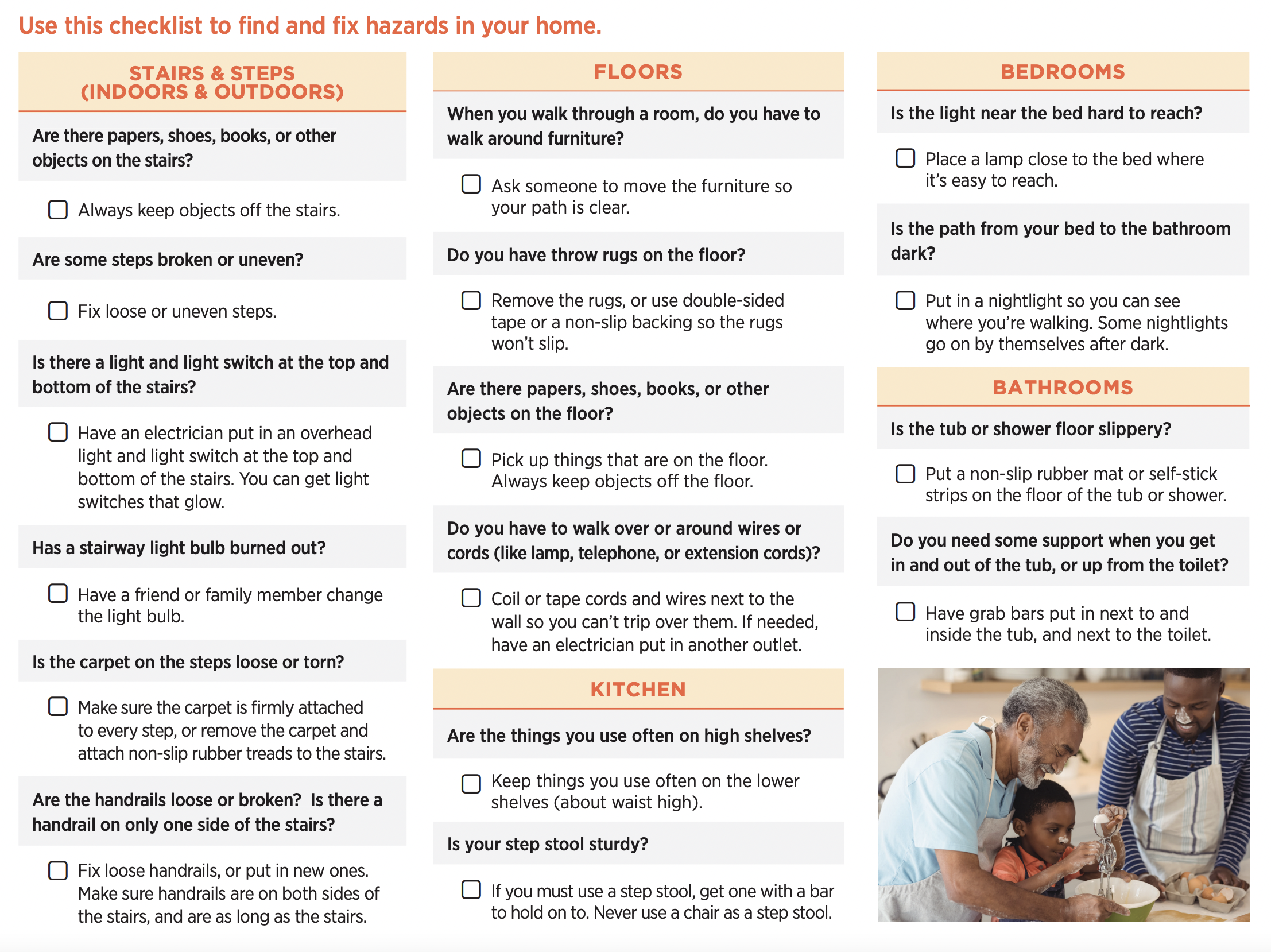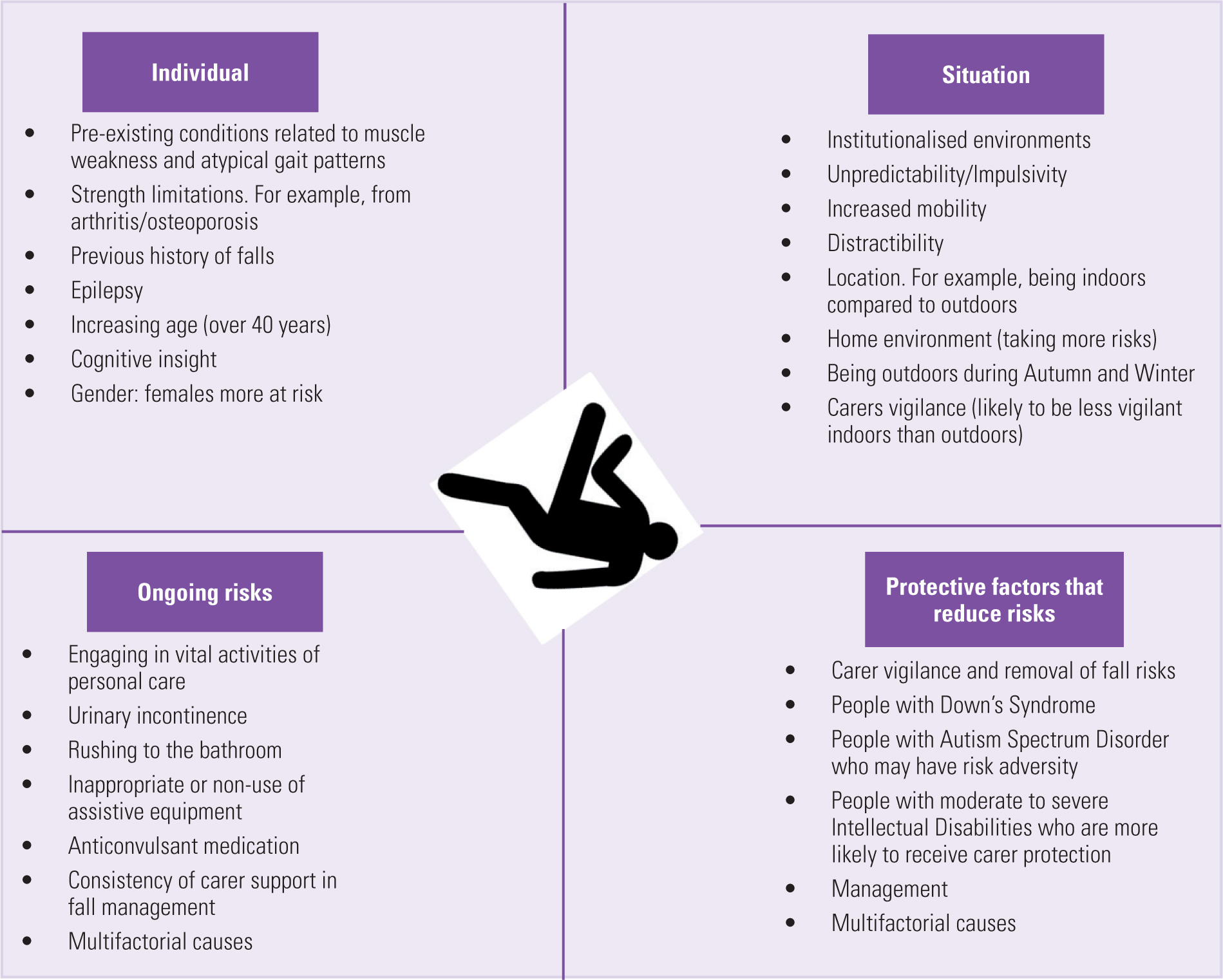What Does Dementia Fall Risk Do?
Table of Contents5 Easy Facts About Dementia Fall Risk DescribedGetting The Dementia Fall Risk To WorkAll About Dementia Fall RiskSome Known Factual Statements About Dementia Fall Risk The Ultimate Guide To Dementia Fall Risk
Make certain that there is a marked location in your clinical charting system where team can document/reference ratings and document pertinent notes related to fall prevention. The Johns Hopkins Fall Risk Assessment Tool is one of many tools your staff can use to help prevent adverse medical occasions.Patient drops in hospitals prevail and debilitating adverse events that linger regardless of years of initiative to lessen them. Improving communication across the evaluating nurse, treatment group, individual, and client's most involved pals and household may strengthen fall avoidance initiatives. A group at Brigham and Women's Hospital in Boston, Massachusetts, looked for to establish a standardized loss avoidance program that centered around improved interaction and client and family involvement.

The advancement team emphasized that effective application depends on patient and team buy-in, combination of the program into existing operations, and integrity to program processes. The group kept in mind that they are coming to grips with how to make certain connection in program implementation throughout periods of crisis. Throughout the COVID-19 pandemic, for example, a rise in inpatient falls was connected with constraints in client involvement together with restrictions on visitation.
8 Easy Facts About Dementia Fall Risk Shown
These events are commonly thought about preventable. To implement the intervention, companies require the following: Access to Fall ideas sources Fall suggestions training and re-training for nursing and non-nursing team, including new nurses Nursing operations that allow for client and household involvement to conduct the falls evaluation, make sure usage of the avoidance strategy, and conduct patient-level audits.
The results can be extremely damaging, usually accelerating client decline and triggering longer healthcare facility keeps. One research approximated stays increased an additional 12 in-patient days after a client autumn. The Autumn TIPS Program is based upon interesting clients and their family/loved ones across three primary processes: evaluation, personalized preventative interventions, and auditing to guarantee that clients are engaged in the three-step fall prevention procedure.
The person analysis is based upon the Morse Autumn Range, which is a verified autumn danger assessment tool for in-patient hospital settings. The range consists of the 6 most typical reasons patients in hospitals drop: the person autumn history, high-risk problems (consisting of polypharmacy), use IVs and other external tools, mental status, stride, and flexibility.
Each danger element relate to several workable evidence-based interventions. The nurse develops a plan that incorporates the treatments and is noticeable to the care group, individual, and household on a laminated poster or printed aesthetic aid. Registered nurses establish the plan while fulfilling with the individual and the client's family.
Dementia Fall Risk for Dummies
The poster offers as a communication tool with you could check here various other participants of the patient's care group. Dementia Fall Risk. The audit part of the program consists of evaluating the individual's expertise of their risk elements and prevention strategy at the device and hospital levels. Nurse champs carry out a minimum of 5 individual interviews a month with clients and their households Discover More Here to look for understanding of the loss avoidance strategy

An estimated 30% of these drops lead to injuries, which can vary in extent. Unlike other negative occasions that call for a standard clinical reaction, autumn prevention depends extremely on the requirements of the client. Consisting of the input of individuals that understand the person ideal permits better customization. This method has shown to be much more efficient than autumn prevention programs that are based mainly on the production of a danger score and/or are not customizable.
Not known Incorrect Statements About Dementia Fall Risk

Based upon auditing outcomes, one website had 86% compliance and 2 sites had over 95% conformity. A cost-benefit analysis of the Loss ideas program in eight hospitals approximated that the program expense $0.88 per patient to apply and led to savings of $8,500 per 1000 patient-days in straight costs connected to the prevention of 567 tips over three years and 8 months.
According to the advancement team, companies thinking about applying the program must conduct a preparedness assessment and falls avoidance spaces evaluation. 8 Additionally, companies should make sure the required framework and workflows for application and develop an application strategy. If one exists, the organization's Autumn Avoidance Task Pressure should be associated with preparation.
Some Known Incorrect Statements About Dementia Fall Risk
To start, companies need to ensure completion of training modules by nurses and nursing assistants - Dementia Fall Risk. Health center team should evaluate, based on the requirements of a healthcare facility, whether to make use of a digital wellness document hard copy or paper variation of the loss avoidance strategy. Applying groups need to hire and educate registered nurse champs and establish processes for auditing and reporting on fall data
Team require to be entailed in the procedure of upgrading the process to engage clients and household in the assessment and prevention strategy procedure. Solution ought to be in place so that devices can recognize why an autumn happened and remediate the cause. More especially, registered nurses must have channels to provide recurring responses to both staff and system management so they can change and enhance loss avoidance operations and connect systemic troubles.